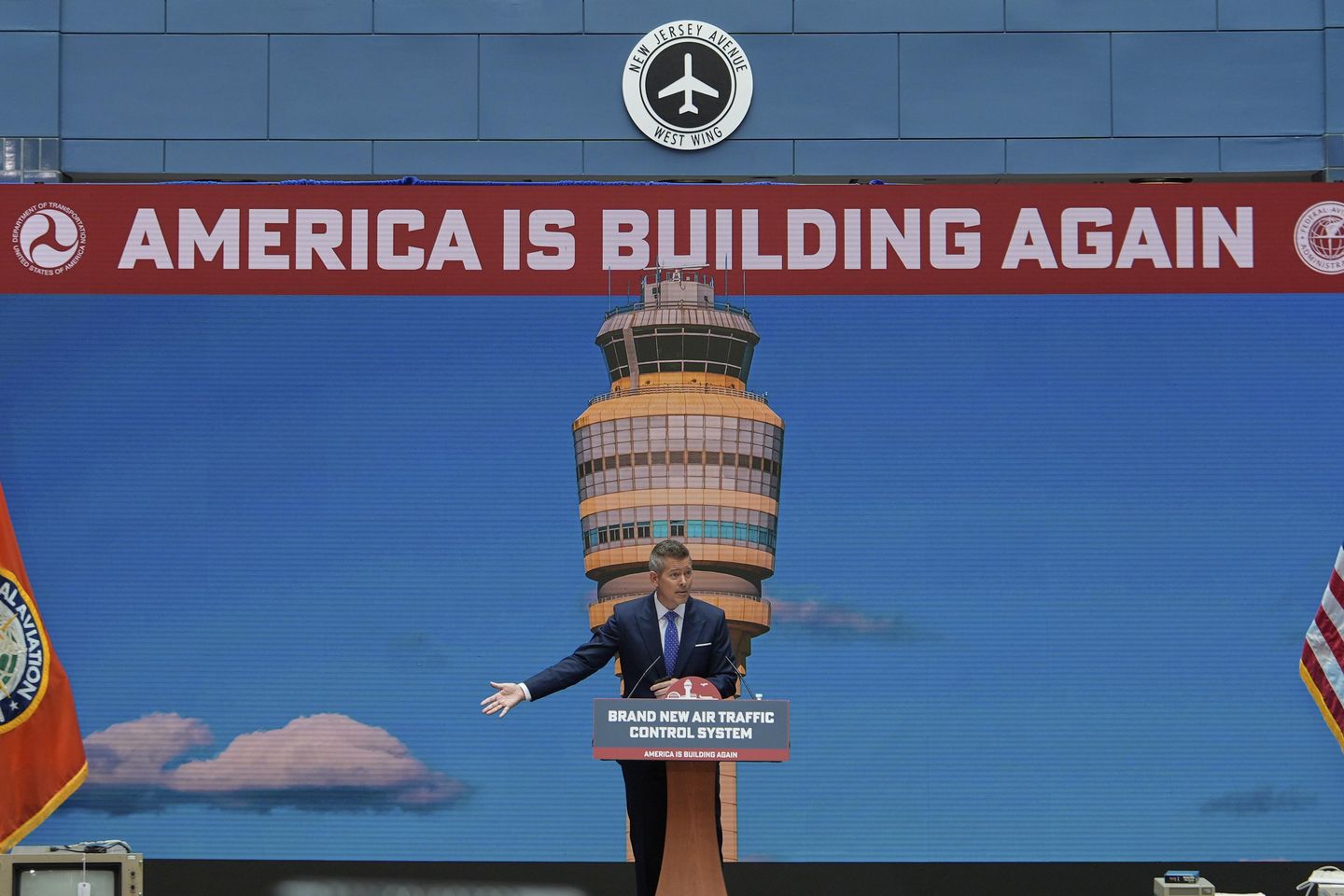
Transportation Secretary Sean Duffy on Thursday announced an overhaul of the nation’s air traffic control system following a high-profile crash in Washington and near tragedies elsewhere that have shaken confidence in the industry and highlighted the challenges facing the outdated system.
Mr. Duffy said the Trump administration is committed to building a state-of-the-art system that will address decades of neglect in under four years.
“The system we have here — it is not worth saving,” Mr. Duffy said at Transportation Department headquarters in Washington. “I don’t need to preserve any of this. It is too old.”
Likening the current system to a 1967 Volkswagen, Mr. Duffy said, “I don’t want to preserve the Beetle. I actually want to build a brand-new car — so we are going to build a brand-new car, a brand-new system.”
The proposal calls for replacing the 1970s and 1980s radars, building new air traffic control centers and rebuilding towers. Fiber, wireless and satellite technologies will be replaced at over 4,600 air traffic control sites. Plus, 174 weather stations will be added in Alaska.
Joined by a coalition of industry leaders, Mr. Duffy said Congress can help fast-track the project by appropriating all the money needed to finish it and help cut through the red tape that could slow things down.
Missouri Rep. Sam Graves, chair of the House Transportation Committee, said his panel last week approved a budget proposal that included a $12.5 billion down payment for the overhaul, with more money expected.
The focus on airline safety jumped in January after an Army helicopter crashed into an American Airlines jet, killing all 67 people aboard both aircraft, near Reagan National Airport.
Some of the victims’ family members were in attendance at Thursday’s press conference.
The sense of urgency increased last month after air traffic controllers overseeing the planes coming into and out of New Jersey’s Newark Liberty International Airport temporarily lost radar and communications with all the pilots.
Their screens went dark for up to 90 minutes, leaving the pilots blind and air traffic controllers unable to track planes. According to Scott Kirby, CEO of United Airlines, the system has failed more than once recently.
The scare at Newark led to thousands of delays and hundreds of canceled flights, adding to public dissatisfaction with airlines.
Some of the air traffic controllers have since taken a leave of absence to decompress from the stress of the situation.
Mr. Duffy said the “frightening” blackout at Newark demands action.
“If we don’t actually accomplish the mission that we are announcing today, you will see Newarks not just in Newark,” Mr. Duffy said. “You will see Newarks in other parts of the country because it is an aging system, and so we actually have to upgrade it.”
President Trump also weighed in, telling attendees on speaker phone that he was “thrilled to announce the complete rebuilding and modernization of America’s air traffic control system.”
“These actions will bring American air traffic control to the highest level of anybody, any country, anywhere in the world,” Mr. Trump said.
The press conference was also headlined by Chris Rocheleau, acting head of the Federal Aviation Administration; Jennifer Homendy, chair of the National Transportation Safety Board; and Nicholas Calio, CEO of Airlines for America.
Mr. Kirby was also in attendance with the heads of the nation’s other major airlines: Robert Isom of American Airlines, Ed Bastian of Delta Air Lines, Joanna Geraghty of JetBlue and Robert Jordan of Southwest Airlines.
“This really is a historic day, a day I have been looking forward to my entire career, when I felt like we turned the corner and are on the path to give the United States the best-in-class air traffic control system that the citizens of the United States deserve,” Mr. Kirby said.

















